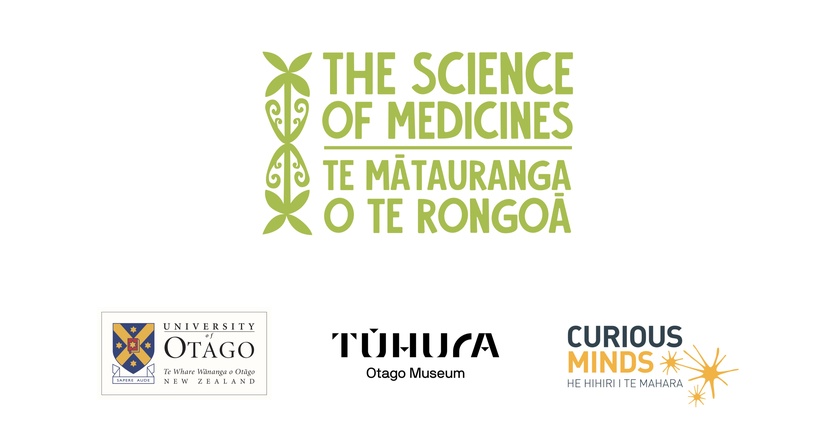Antonia Hoeta is part of The Science of Medicines – Whakatere Waka – an innovative, hands-on education programme that uses te ao Māori perspectives to build conversations and confidence around medicines. Antonia has a strong interest in human viruses, thinks young people learn best through play and is an active gamer. Put all of these components together and the result is the D-Bug Game Design Challenge!
Education about vaccines and viruses
Vaccines and viruses have been hot topics for a number of years, even prior to the COVID-19 pandemic. Antonia saw the need for education programmes that are fun and explain the science in a trustworthy way, and gaming seemed an obvious choice. Prior to creating a game, designers would need an understanding of the basic structures of viruses, methods of viral transmission and infection, and defence strategies – including our immune systems and vaccines.
Tamariki and rangatahi were invited to design a game or game concept with a focus on vaccines and viruses. They were asked to consider character design, the game environment and rules and game storylines.
The Science of Medicines team created colourful infographic fact sheets that present key science concepts and content vocabulary in visual, easy-to-understand formats.
I learned quite a lot. Deadly Looks was my favourite information sheet because of just how funny it is – with people’s own little viruses.
Callum, D-Bug Game Design Challenge participant
Game design participants had access to the factsheets via the Tūhura Otago Museum website and via face-to face workshops. The factsheets are downloadable as PDFs and feature in the student activity Viruses and immunity – interpreting infographics.
- D-Bug Fun Facts: Going Viral!
- D-Bug Fun Facts: Deadly Looks
- D-Bug Fun Facts: Transmission & Infection
- D-Bug Fun Facts: The Immune System
- D-Bug Fun Facts: Vaccines & Antivirals
- D-Bug Fun Facts: Mutations
- D-Bug Fun Facts: Defence Strategies
- D-Bug Fun Facts: Community Immunity!
Hands-on design workshops
Antonia was also the Science Engagement Coordinator Māori at Tūhura Otago Museum. The museum hosted the design challenge workshops to support the young people with their game development. The workshops catered for a range of ages and a range of creative skills. There were options for clay model making and diorama building as well as digital game creation – all with a focus on storytelling. Participants were encouraged to consider their characters’ abilities, transmission strategies and symptoms.
The participants were also encouraged to be creative. The young people met the design brief by creating original stories that were interwoven with information about the immune system and how vaccines can protect us from disease. Some viruses took the shape of mini Mafia minions, bananas and even hotdogs, and they used numerous modes of transmission. The viruses were often challenged by white blood cell-like creatures – while vaccines were delivered via baby cabbages or from the tentacles of an octopus!
Your role in the game is avoiding the big virus until you can handle it with a vaccine and taking down the smaller parts of it.
Anya, D-Bug Game Design Challenge participant
Introducing digital design
The initial idea for the D-Bug Game Design Challenge was for participants to create digital games. Antonia investigated a number of free software packages for game development. She also sought help from game designers in the Otago community – including picking up coding tips from the kids themselves. Workshop participants were able to create 3D images of their clay models, transfer them to Blender and then into their digital worlds.
Digital game creation takes time – certainly more than a couple of Sunday afternoons. Antonia says, “The goal was not to create a playable game. The goal was to have the kids learn about the aspects of viruses and let their creativity flow to create the set-up of a game.”
The D-Bug Game Design Challenge worked in tandem with The Science of Medicines to build community understanding of viruses and vaccines. There were lots of conversations with parents and caregivers during the workshops, and the young participants passed their growing knowledge on to their whānau.
Antonia and The Science of Medicine team have shared their game process – you can find it in the activity Game design for viruses and vaccines.
Related content
Fighting infection – introduction curates many of the Hub’s resources on the immune system, vaccinations and rongoā.
Antimicrobial resistance – a context for learning curates many of the Hub’s resources on what Dr Karen Maclennan refers to as the not so silent pandemic.
In Gaming for learning discover more on how games and simulations can help us think differently about learning and see some more examples of what teachers and students are doing with games in the classroom.
Related activities
The wars within compares the human immune system to a castle protected by knights.
Drama with microbes uses drama to model science ideas about immune response to pathogenic microorganisms.
Making digital space debris clean-up games uses Scratch to engage learners about the wicked problem of space junk.
Acknowledgement
The Science of Medicines is a collaboration between the University of Otago and Tūhura Otago Museum and was funded by an Unlocking Curious Minds community engagement grant.


